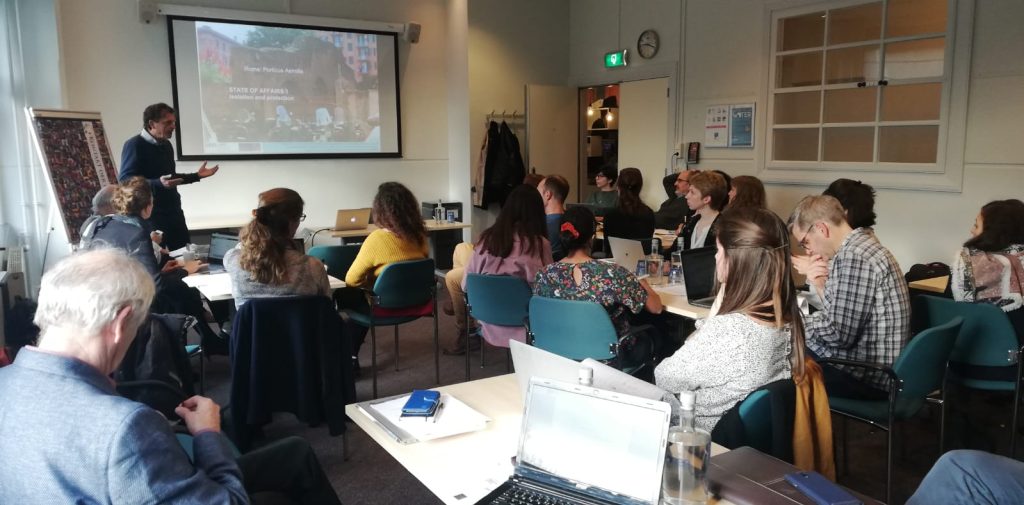By Marta Ducci
Written in commission for the Journal of European Landscapes

More than two years have passed already since I started my PhD within the ITN Heriland programme. I (ESR 14 [1]) am based at the Vrije Universiteit in Amsterdam, from where I am conducting applied research in southern Italy on the integration of different participatory methods for the co-design of cultural landscapes involving the local community.
While my first year was focused on the theoretical aspects of my work, the second year was mainly focused on applied research. During this phase, I created and disseminated a map-based questionnaire among the study-area population, who was subsequently involved in co-design workshops to co-create a strategic plan for valorisation on the local cultural landscape (header image, Figure 1). The general objective was to identify possible strategies for the area’s sustainable development based on enhancing the cultural landscape through tourism and slow mobility. Now, at the beginning of my third and final year of my PhD, I am processing the results and writing the first articles for my thesis.
Despite the fact that most of my PhD was during the pandemic (2 years out of 2.5), with significant limitations in travelling, attending conferences and networking, Heriland’s network has always been active. Of course, a large part of the programme was based on international exchange, with training trips every six months to one of the locations of the five Universities that are part of the programme (Amsterdam, Rome, Delft, Newcastle, Jerusalem and Gothenburg), but these were largely reduced and done mostly online due to the pandemic. Anyway, looking back to the past two years, this international experience has certainly been one of personal, professional and thought-provoking growth.
In fact, through Heriland, the other ESRs and I have been able to participate in interesting workshops, seminars and training experiences specially created for (and by) us, on topics relevant to the European debate on the landscape, heritage and planning, such as on changing environments, shifting demographies and contested identities, digital transformations and the spatial turn. This allowed us to connect and stay connected, to confront ideas and perspectives different from our own -also thanks to the fact that we are an international team with people from all continents – and develop a greater critical perspective on heritage, landscape and planning (Figure 2).

As we approach the end of the PhD programme, I think many of us (ESRs) have started to think about the next steps. In the times in which we live, it is challenging for us (young people) to find a new job, and even more a fulfilling and paid one. So we hope that this international doctorate programme will open up new and greater possibilities for our future.
For now, almost a year is left until the end of my Heriland experience, and I can say that I already see substantial personal and professional growth, and I look forward to seeing how I will be at the end of the following year.
[1] Early-Stage Researcher n. 14 out of 15 PhDs who are part of the programme.

